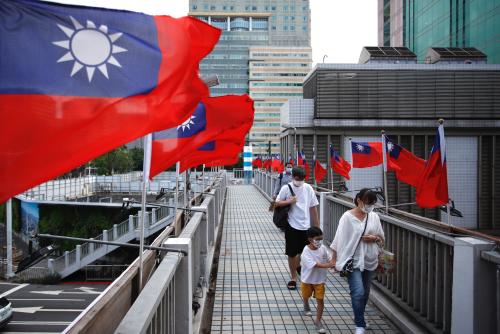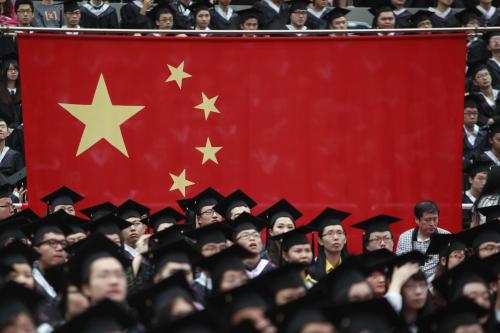To understand the impetus for launching the Asian Infrastructure Investment Bank, look no further than China’s concern that the governance structure of existing international financial institutions was evolving too slowly. An important agreement to increase the resources of the International Monetary Fund and to raise the voting shares of fast-growing emerging markets, ratified by other nations, has been stalled in the U.S. Congress. It is ironic that one of China’s frustrations with the U.S.-dominated institutions is that China sees a need for more resources and is willing to contribute, whereas the different parts of the U.S. government cannot agree to this expansion.
China’s frustration is not just about the size of the institutions and its weight within them. In the case of the World Bank, China has argued for years for more focus on infrastructure and growth.
Several years ago, Ernesto Zedillo, former President of Mexico, chaired a “High-Level Commission on Modernization of World Bank Group Governance.” This was a serious effort by a distinguished international committee, including Zhou Xiaochuan from China and other emerging market heavyweights.
The Zedillo report is quite critical of the current World Bank arrangement of a resident board that approves all loans. The resident board is both a large financial cost to the bank ($70 million per year) and an extra layer of management that slows down project preparation and makes the bank less efficient. Slowness of project preparation is one of the main criticisms of clients concerning the poor performance of the multilateral development banks.
The Chinese officials charged with developing AIIB are looking at the Zedillo report for ideas. It is likely that the bank will have a non-resident board that meets periodically in Beijing and also by videoconference. Given the newness of the bank, a likely compromise among the countries that have signed up is that the board will approve many of the initial projects and eventually delegate more decision-making to management.
The Zedillo report recognizes the importance of environmental and social safeguards but argues that the World Bank has become so risk averse that the implementation of these policies imposes an unnecessary burden on borrowing countries. In practice, developing countries have moved away from using the existing multilateral development banks to finance infrastructure because they are so slow and bureaucratic. The enthusiastic response of developing countries in Asia to the AIIB concept reflects their sympathy with the idea that a bank can have good safeguards and still be quicker and more efficient than the existing banks.
Some of the Western commentary on AIIB expresses a fear that China will use the bank for narrow political or economic ends. Now that a diverse group of nearly 60 countries have signed up, it would be difficult for China to use the bank to finance projects in favored countries over the exclusion of other members.
The idea that AIIB projects would help absorb China’s over-capacity problem does not make sense. If the bank is very successful, then in five years it might lend $20 billion per year, on a scale with the World Bank’s International Bank for Reconstruction and Development lending. In the steel sector alone, China would need $60 billion per year of extra demand to absorb excess capacity. Add in excess capacity in cement, heavy machinery and other sectors — the point is that the bank is just way too small to make any dent in the excess capacity problem, even if China were the sole supplier for these projects, which it won’t be.
The initial success of AIIB is a diplomatic victory for China. The U.S. diplomatic response has not been adroit, playing into the narrative of U.S. decline in the Asia-Pacific. But that perception could change quickly. Infrastructure is the “hardware” of economic integration, which is certainly necessary. But trade agreements such as the Trans-Pacific Partnership are the “software.” If the U.S. and its partners can negotiate and implement this agreement for deeper integration, that will provide a large boost for the members and reestablish U.S. importance to the Asia-Pacific economy.
China pursuing AIIB and other initiatives that do not include the U.S., while the TPP negotiations do not involve China, creates a risk of competing blocs and institutions. In my view, though, the most likely outcome is the world ends up with a more robust and inclusive set of institutions. AIIB is likely to make the other development banks more effective and become a part of the global architecture. China and other Asian countries not now involved in TPP are likely to join if it is successful. Bringing the hardware and the software together, the outcome could be a more integrated Asia-Pacific economy.
This article was originally published in the April 2015 edition of the Bloomberg Brief.



Commentary
Lessons for the AIIB from the experience of the World Bank
April 27, 2015